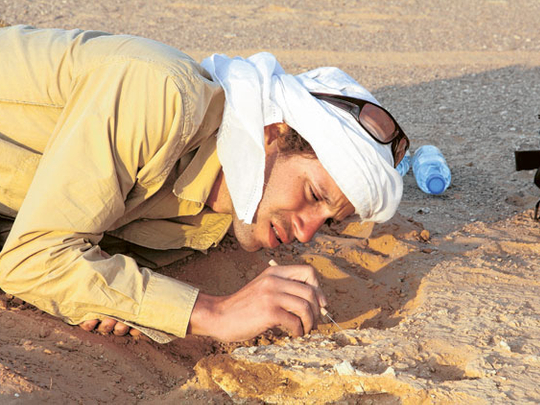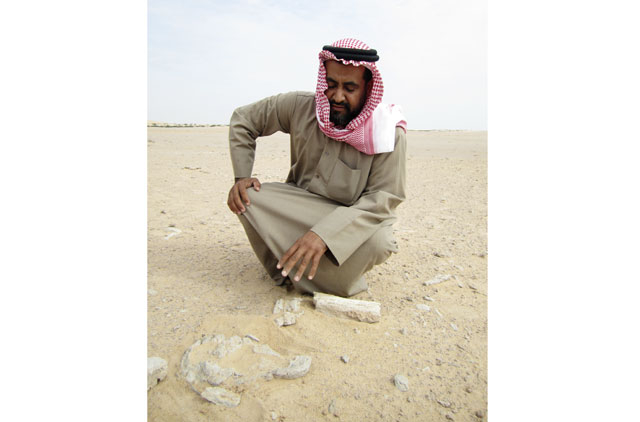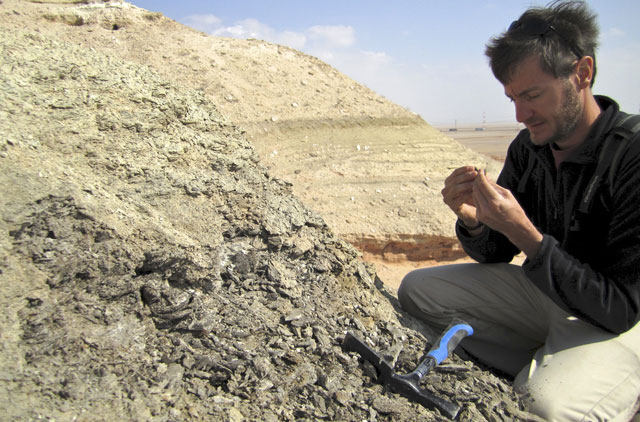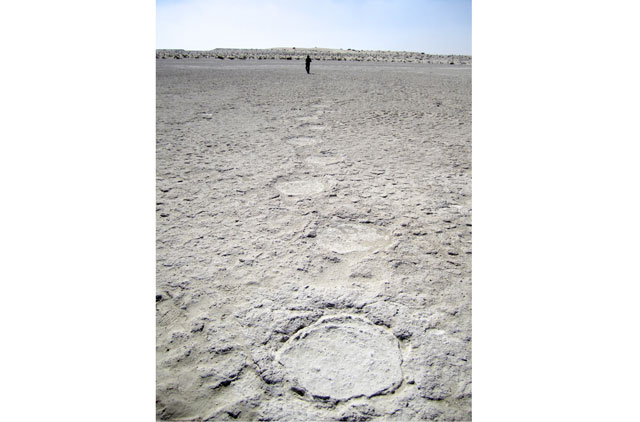
Abu Dhabi: The jaw of a hippopotamus has been discovered in the Western Region (Al Gharbiya) in Bedaa Al Motawaa and Malissa.
The Abu Dhabi Authority for Culture and Heritage (ADACH) announced the discovery. The excavation team measured the footprints discovered in the sand layer of sedimentary constituents to track the path of the animals.
The discovery will help identify the relation between these fossils and their counterparts in Africa and in the Indian subcontinent.
This fossil and geological evidence found in the Western Region reaffirm the existence of a river in the area which contained forests, pasture and animals including mammals, reptiles, molluscs and birds. The discoveries were made due to the scientific cooperation between Adach and Yale University.
A joint research project in 2010-2011 was carried out to detect fossils.
Mohammad Khalaf Al Mazroui, cultural heritage adviser at the Crown Prince's court and Adach general manager said: "The excavation project, which is led by Adach and Yale University Museum, began four years ago to study the geological layers of the region".
"A new technology was used to take pictures from a suspended camera in a kite to track the animals' footprints over a series of rocks in the western region named Baynuna shape that stretches to six to eight million years back," Al Mazroui said.
"The same occurred in Malissa and Bedaa Al Motawaa where pictures were taken to provide information crucial to the fossil sites."
Adach historic department director Mohammad Amer Al Niyadi said the team included field experts such as Professor Andrew Hill of Yales University in the US; Dr Faisal Bibi from the University of Poitiers, France; Dr Brian Kratz from the Western University of the United States; and Professor Marilyn Fox of the Yale University museum, Professor Nathan Craig of the University of Pennsylvania and Dr Mathew Schuster of the University of Strasbourg, France, plus the technical team of local archaeologists.















